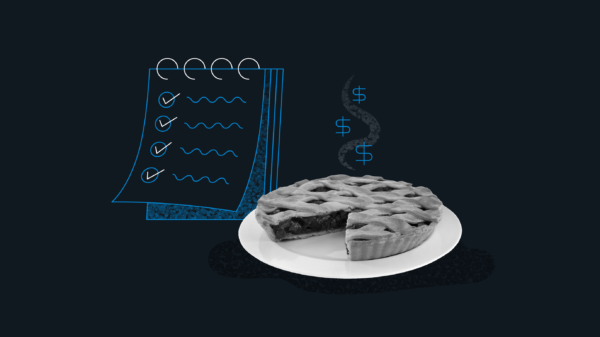Aug 23, 2018
How to Budget For Your Dog
Keep your pet costs on a leash.

Dogs may be cute and cuddly, but they aren’t cheap.
The average cost of owning a dog of any size in the first year is nearly $3,100, according to the American Kennel Club (AKC).
But just because dogs require a little financial planning doesn’t mean that you and your family can’t get one. You just need to make sure you budget for it. Keep these costs in mind as you prepare your home–and your bank account–for a new member of the family.
Breaking down the costs: Toys
Dogs, much like children, need to play. In all likelihood, that means that you’ll need to replace an item (or two) around the house soon after bringing a new dog home—especially a puppy, or a dog that isn’t trained. They’re going to want to chew on things, play tug-of-war, and tear around the house.
Dogs like toys, but some pups will tear right through them in a matter of minutes. Test a few out, and if need be, migrate to more durable, chew-friendly toys that come with quality guarantees. Higher-end, virtually indestructible toys, and toys with a quality guarantee like the Goughnut, range from $20 to $40. But you may find it’s a small price to pay compared to constantly replacing plush toys or visiting the vet because of ingested stuffing.
Wear and tear
Dogs can also take an interest in household items—or the house itself. They can spend days on end chewing on or otherwise destroying furniture, shoes, and practically any other household item they can find. You may also find that your dog has “accidents” on the floor, potentially leading to expensive cleaning or replacement costs.
And don’t forget that some dogs like to get into the garbage, which they can then drag all around the house.
Registration
Many cities and counties require pet owners to obtain a license for their animals. In Milwaukee County, for example, the yearly license fee for a dog or cat ranges from $12 to $36 a year. If you choose to forego the license, you could face a penalty that could cost more than the license itself.
Other offenses, like allowing your dog to run off his leash, can also lead to a citation, depending on your city’s laws. In Seattle, for example, you could face a $54 ticket for allowing your dog to run through a city park off leash and a $125 ticket for failing to have a license.
You may want to consider the cost of microchipping your new friend, which can help you locate your dog if it gets lost. If your pet doesn’t already have a microchip, you can have one inserted by a vet for around $50. But that’ll come with annual registration fees, too.
Vaccinations
Don’t listen to Jenny McCarthy—you need to get your dog vaccinated.
Puppies generally require more vaccines than older dogs to protect them as they age, according to the AKC, and many of the vaccines for young dogs require follow-up appointments and booster shots. Total costs will vary based primarily on your location but plan on spending several hundred dollars.
Training
Unless you’re a professional dog whisperer, training your pup to sit, stay and stop jumping on your guests do not come for free. A six-to eight-week group training session ranges from $40 to $160 according to estimates from Thumbtack and CostHelper.com, but group training isn’t the right environment for every dog. Shy or aggressive dogs are better served with private training, which can cost anywhere from $30 to $100 an hour.
If you have the time and patience—and an agreeable pup—you can forego training classes and opt for the free route: YouTube videos and library books.
Working it all into your budget
There’s likely to be even more surprise expenses that pop up after you decide to get a dog. They may get sick and require medication, or ruin an expensive piece of furniture. You can’t control the unknowns, but you can plan for them.
Before you head off to pick up Fido, build him into your budget by including pet expenses including food and toys, vaccinations and licensing.
Keep in mind that it’s best to know what you’re in for before your bank account ends up in the doghouse.
Related Articles

The 2024 Financial Checklist: A Guide to a Confident New Year

9 Ways to Celebrate Financial Wellness Month

Budgeting for Young Adults: 19 Money Saving Tips for 2024

The Best Personal Finance Books on Money Skills, Investing, and Creating Your Best Life for 2024

What Is a Financial Plan? A Beginner’s Guide to Financial Planning

How to Save Money: 45 Best Ways to Grow Your Savings





